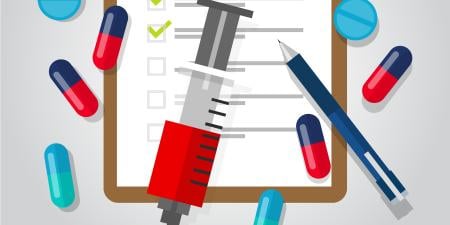Few patient age groups are able to spark controversy the way adolescents can. There is even debate over which patients should be included in this group (Does adolescence begin at puberty? At age 13? Does it end at age 18? After college?). A second controversy surrounds the question of which medical specialties should rightly be involved in treating teenage patients (pediatricians? family practice? internal medicine? adolescent specialists? adult or pediatric subspecialties?). Given the range of ages as well as medical specialties involved in the care of teens, the ethical dilemmas raised in this issue of Virtual Mentor should resonate with nearly every physician in every specialty.
One reason that adolescents are such a fascinating patient group is their in-between status. They are not children and not yet adults. We want adolescents to become competent decision makers as adults, and this requires allowing them to participate as teenagers in decisions that affect them. However, we know that adolescents do not always make the best decisions. Adolescents participate in a wide range of risky behaviors: 42 percent have gambled, 45.6 percent have smoked marijuana, 51.2 percent have smoked cigarettes, and 75.6 percent have consumed alcoholic beverages.1 The adolescent desire for privacy and independence balanced with the knowledge that adolescents are not fully mature raises 3 ethical issues: consent, confidentiality, and decision-making capacity. All 3 issues are addressed in this month's Virtual Mentor.
The issue of consent comes up whenever physicians must consider whether a patient is able to make decisions independent of parental permission. In Case 1, a physician must weigh the refusal of a teen patient against his parents' wishes for a drug test. Our OpEd section presents 2 opinion pieces on the topic of consent, discussing whether it is appropriate for physicians to accept teen consent for cosmetic plastic surgery, a situation that may be increasingly common given the success of television make-over shows such as "The Swan."
Adolescents often confide information to their physicians that they do not wish disclosed to their parents or caregivers. In case 2, a physician is faced with a patient who confesses to an eating disorder and wishes to keep it secret. The policy forum picks up this topic in its review of current policies and best practices in handling confidentiality in teen patients with substance abuse.
The third critical topic is adolescents' ability to make decisions for themselves and their health care. Case 3 concerns a teenage patient with a chronic disease and the factors involved in deciding whether she is ready to make the transition to adult subspecialists.
In addition to the 3 basic ethical dilemmas outlined above, this issue also addresses the more subtle difficulties that many physicians have when they come face to face with adolescent patients. In our clinical pearl, Rachel Katzenellenbogen offers a handy mnemonic to use when interviewing teen patients. It ensures that you have explored all major aspects of a teenager's life that affect his or her health. In the medical education section, Maurice Clifton and Alda Gonzaga discuss various ways that medical schools can provide their students with the knowledge and skills that are invaluable in working with adolescents.
Looking at current trends in law that affect the health of adolescents, Kate Karas expresses concern over statutes that would force physicians to report all occurrences of sexual activity among minors to social services as "child abuse." These statutes would usurp the role of physicians in determining whether harm has or has not taken place.
Our journal discussion, policy forums, and medical humanities sections explore 3 other areas that can profoundly affect the adolescent population. Louis Kraus and Renee Mehlinger provide a comprehensive look at treatment of adolescent depression and how the FDA's black box warning may impact therapy. Robert Morris takes an in-depth look at the health care needs and problems of incarcerated teenagers. Alli Grady reviews a published first-person account of the struggles teenagers face when coping with nascent problems of gender identity, a topic of increasing relevance today.
Last, when considering which subspecialists are involved in the care of teenagers, we offer a historical look at the emergence of adolescent medicine as a new specialty. We describe the context in which this specialty developed, and hint at its future as a subspecialty of medicine.
In viewing this month's issue as a whole, we have endeavored to bring together articles that examine ethical dilemmas affecting specific populations of at-risk teenagers, dilemmas such as eating disorders, substance abuse, incarceration, and depression. In reading these articles, you will find themes of consent and confidentiality that are applicable to every teenager that you may meet. Overall, we hope you will come away with a better understanding of the challenges facing adolescents and some ideas about how to address them more effectively with your own patients.
The learning objectives for this issue are:
1. Understand the importanceand limitsof confidentiality in treating adolescent patients.
2. Learn methods for appropriately reviewing all biopsychosocial systems with adolescent patients.
3. Learn the history, circumstances, and need for the emergence of adolescent medicine as a specialty.
4. Understand the skills needed by physicians when dealing with adolescent patients and how medical schools can provide these within a 4-year curriculum.
5. Identify circumstances in which adolescent patients' abilities to consent for their own care are controversial, such as in plastic surgery, management of an eating disorder, and ability to manage a chronic illness.
6. Learn the factors involved in determining whether an adolescent patient is ready for the transition to adult specialty care.
7. Learn the best approach and treatment for adolescent depression and the impact that the black box warning has had on treating depression.
8. Understand the challenges and rewards involved in caring for adolescent patients who are incarcerated.
References
-
Romer D. Reducing Adolescent Risk: Toward and Integrated Approach. Thousand Oaks, Calif.: Sage Productions; 2003:3-4.



